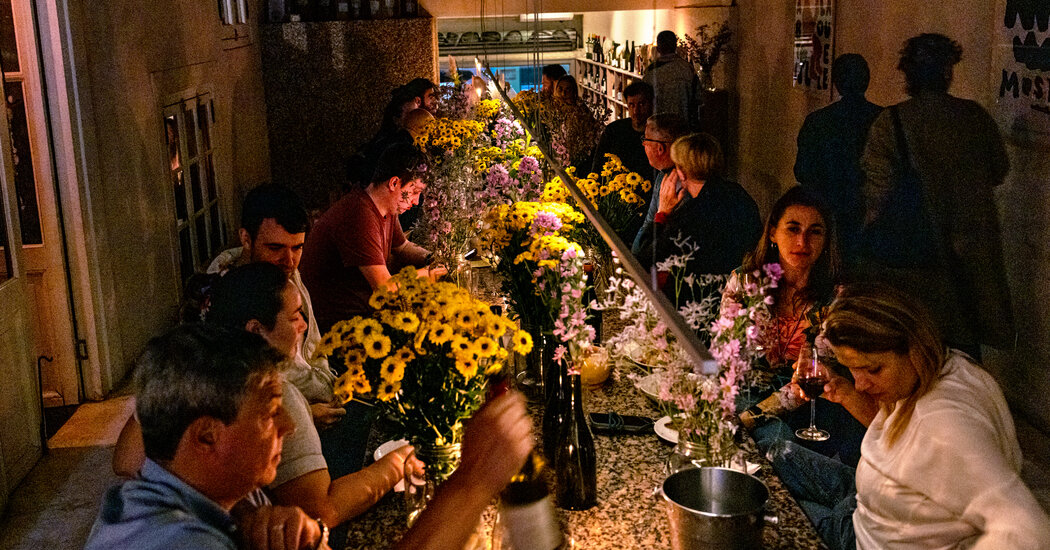To become a city’s coolest new neighborhood, there are certain prerequisites: a crop of cafes that toe the line between cozy and snobbish, chefs combining the innovative with the Instagrammable, and shops so sincere that they are doomed to close when rents rise, which they inevitably will.
But then it must also have quirks. Chacarita, long seen as a low-slung, low-profile neighborhood in north-central Buenos Aires, has plenty.
There’s the cafe that doubles as a museum of photography and triples as a jazz club. Two cavernous, mysteriously indistinguishable pizza halls, both opened in 1947, stand side by side near a subway stop and serve thick-crusted slices draped with mozzarella and onions. And then, in Chacarita’s southwest flank, a cemetery has elegant monuments to the 20th century tango legend Carlos Gardel and the pioneering aviator Jorge Newbery amid vast fields of simply marked, working-class graves. It plays a pretty good second fiddle to Recoleta Cemetery, one of the top 10 tourist attractions in Argentina and housing the pantheon of the country’s revered former first lady, Eva Perón.
Just a 10-stop subway trip from the Obelisk downtown — the fare recently raised to 125 pesos is still under 15 U.S. cents even at the official market’s rate of 878 Argentine pesos to the dollar — totally walkable Chacarita is one heck of a great place to shop, eat and simply wander for a few days, which I did earlier this year, both on my own and with my (then) 19-year-old nephew, Leo, who was studying, or more accurately, “studying,” in Argentina.
Irresistible shops
Chacarita, which means “small farm,” is so-named because its land once served as a kitchen garden and recreational site for Jesuit school students. It eventually became a transportation hub and working-class neighborhood, roughly 100 square blocks. I was utterly charmed by Chacarita’s cobblestone streets, lined with colonial-style single-family homes with interjections of Art Deco and Brutalism. They were the very opposite of late-game Monopoly board monotony, with heavy wooden doors featuring old-fashioned mail slots labeled “CARTAS” and wrought-iron window guards framing the snouts of pet dogs and cats variously curious and agitated by infrequent passers-by.
Though many commercial streets still have a working-class vibe, Jorge Newbery Avenue does not. The street, named for the aviator, is the hipster center of gravity, with shops, cafes, vermouth bars and one vegan restaurant,…
Click Here to Read the Full Original Article at NYT > Travel…
